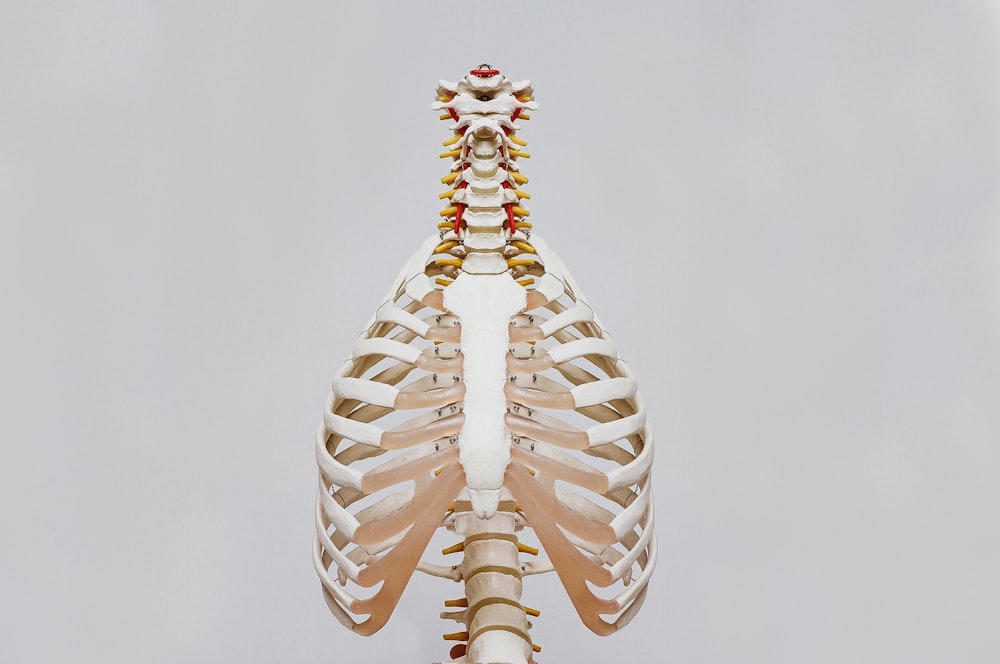目次
胸椎の伸展可動域運動ってどの姿勢で行うのが良い? 立位?座位?四つ這い?腹臥位?
理学療法士・作業療法士が対象とする姿勢異常の中で高齢者に多いのが胸椎の後彎変形です.
胸椎の後彎変形はKnee spine syndromeといった概念に代表されるように膝関節にも影響を及ぼすため,胸椎伸展可動域制限に対する積極的な介入が必要となります.
ただ実際に胸椎の伸展運動ってどの肢位で行うのが効果的なのでしょうか?
今回は胸椎の伸展可動域運動をどの姿勢で行うのが良いかを考えるうえでヒントになる研究論文をご紹介させていただきます.

今回ご紹介する論文
J Orthop Sports Phys Ther. 2011 Apr;41(4):266-73. doi: 10.2519/jospt.2011.3456. Epub 2011 Feb 18.
Thoracic spine extension mobility in young adults: influence of subject position and spinal curvature
Stephen J Edmondston 1, Robert Waller, Peter Vallin, Andreas Holthe, Andrea Noebauer, Enda King
Affiliations expand
PMID: 21335925 DOI: 10.2519/jospt.2011.3456
今回ご紹介する論文は2011年に掲載された論文です.
研究デザイン
Study design: Cross-sectional study.
研究デザインは横断研究となっております.
研究の目的
Objectives: To examine extension mobility of the thoracic spine in young, asymptomatic adults, with particular reference to the influence of subject position and magnitude of the thoracic kyphosis.
健常若年成人を対象として,胸椎の伸展可動域と運動肢位との関連について明らかにすることを目的としております.
研究の背景
Background: Impairment of thoracic extension motion is commonly associated with mechanical pain disorders in this region of the spine. Knowledge of normal thoracic mobility and the factors that may influence this motion is important in the evaluation and management of thoracic pain disorders.
胸椎伸展運動の制限は一般的に胸椎の機械的疼痛障害と関連している.
正常な胸椎可動域の知識とこの運動に影響を与える要因を知ることは,胸椎に対する評価とアプローチを考えるうえで重要となります.
研究の方法
Methods: In 40 asymptomatic adults, the total and regional thoracic extension range of motion was measured using 2-dimensional photographic image analysis. Extension mobility was measured in standing, sitting, prone, and 4-point kneeling. The association between the magnitude of the habitual thoracic kyphosis and extension mobility was also examined.
健常若年成人40例を対象として2次元の画像解析を用いて,胸郭伸展可動域の全可動域および局所の可動域を測定しております.
伸展可動域は立位,座位,腹臥位,四つ這いの4つの肢位で測定しております.
習慣的な胸椎前弯の大きさと伸展可動域との関連性についても検討しております.
研究の結果
Results: When measured from the habitual standing position, the mean range of flexion was 11.5° (3.7°) and mean extension range was 8.7° (3.7°). Thoracic extension was significantly greater in unloaded positions compared to loaded positions (P<.001). The standing thoracic kyphosis angle was significantly correlated with the end range thoracic extension angle in all positions (r = 0.63-0.79, P<.001). There was a poor correlation between the thoracic kyphosis angle and thoracic extension range of motion in all positions (r = 0.11-0.34, P>.06).
立位で測定を行った場合,平均屈曲範囲は11.5°(3.7°),平均伸展範囲は8.7°(3.7°)でありました.
胸椎伸展可動域は重力負荷の加わった肢位に比較して,重力負荷の加わっていない肢位で有意に大きい結果でありました.
立位胸椎前弯角は,すべての肢位において胸椎伸展運動範囲と有意な相関を認めております.
また胸椎前弯角と胸椎伸展可動域との間には,すべての体位において相関を認めませんでした.
研究の結論
Conclusion: When measured from the habitual standing position, thoracic extension range of motion in young individuals is small and poorly correlated with the magnitude of the standing thoracic kyphosis. Unloaded positions (4-point kneeling and prone), compared to positions that load the spine (standing and sitting), appear to promote a greater range of thoracic extension motion
立位で胸椎伸展可動域測定を行った場合には,胸椎伸展可動域は小さく,立位胸椎前弯の大きさとの相関は乏しいことが明らかとなりました.
また胸椎に重力負荷が加わる立位や座位に比較して,重力負荷が加わらない四つ這いや腹臥位では胸椎伸展可動域がより大きくなることが明らかとなりました.
今回は胸椎の伸展可動域運動をどの姿勢で行うのが良いかを考えるうえでヒントになる研究論文をご紹介させていただきます.
今回の結果から考えると胸椎伸展運動を行う際には四つ這いや腹臥位での運動がよさそうですね.







コメント